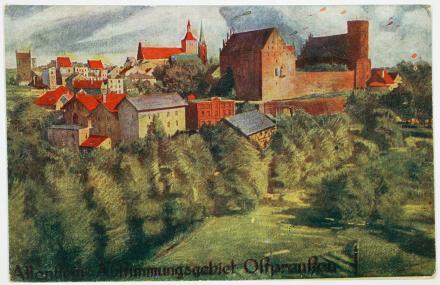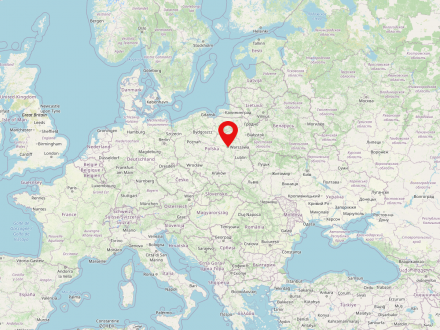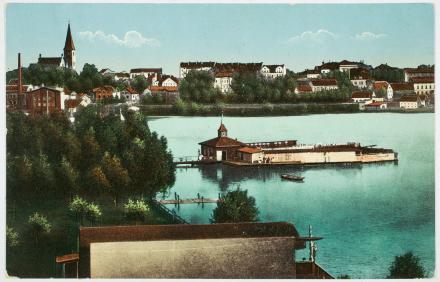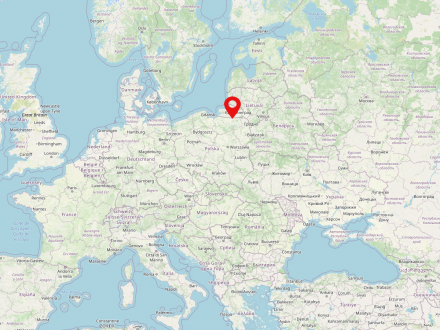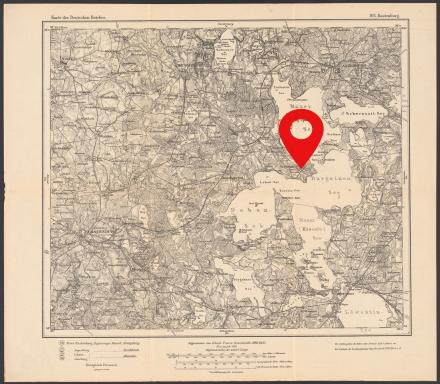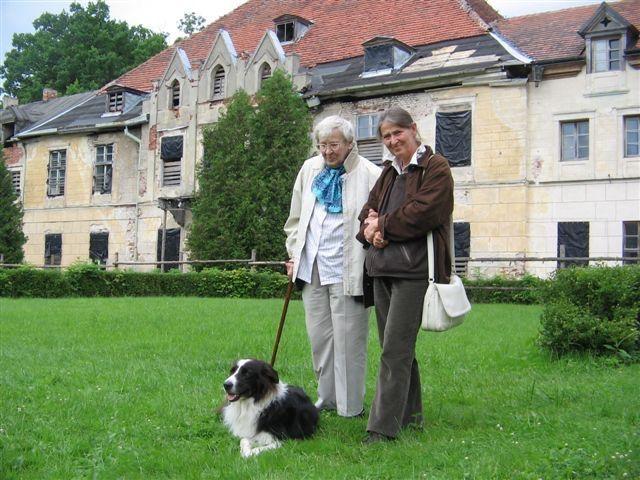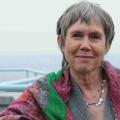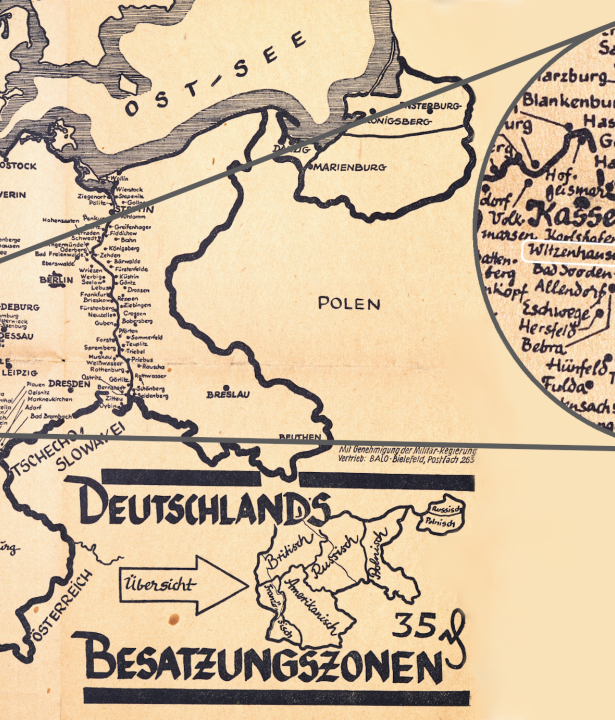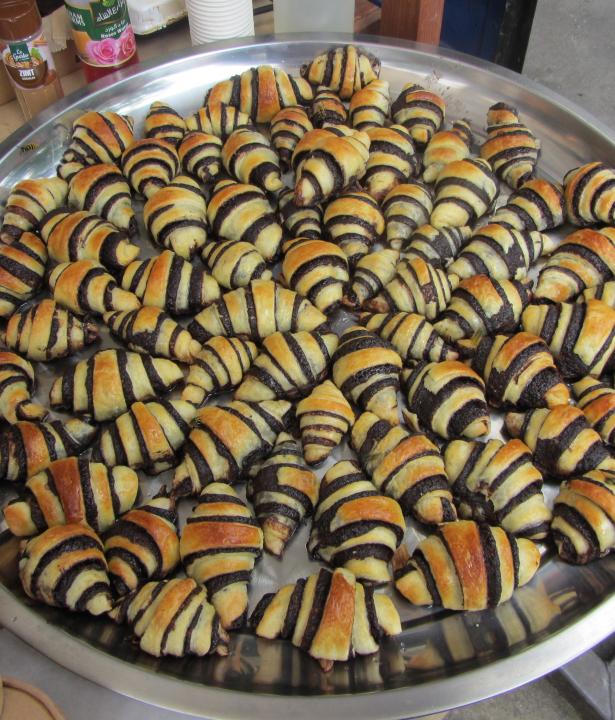Nature and wilderness was all around – Bettina's first word was "tree". When she was alone and the adults were rehearsing a new play in the Knights' Hall, she would spend hours looking out through the Gothic windows or crawling along the vast corridors. Having this much freedom during the authoritarian 1950s was rare.
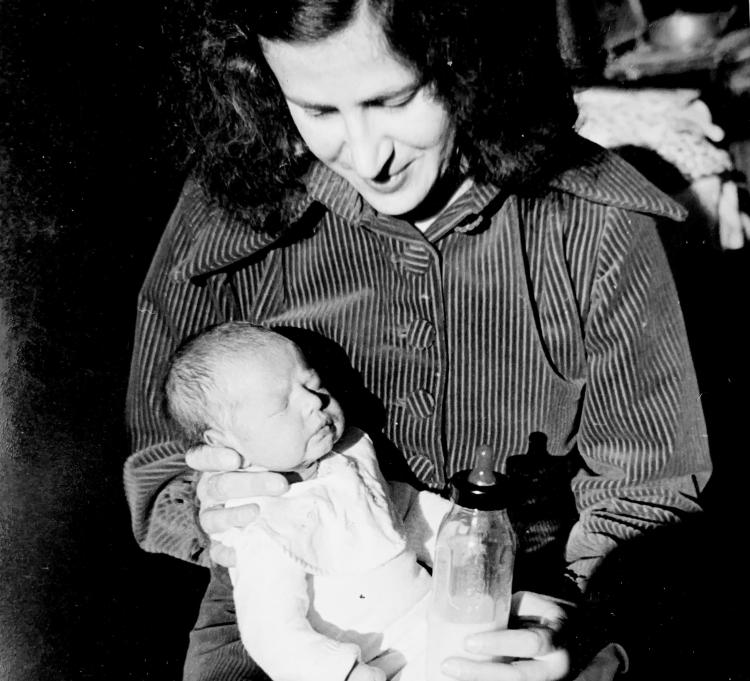
The city of Olsztyn (population 2022: 168,212) was founded in 1353 as Allensteyn on the Łyna river. Olsztyn is the largest city in Warmia and the capital of the Warmian–Masurian Voivodeship. The city is member of the European Route of Brick Gothic, especially because of its Old Town market sqare and the Castle of Warmian Cathedral Chapter.
The picture shows a city view of Olsztyn /Allenstein on a postcard from before 1945.


But the spirit of the times was stronger; classical studies was considered a "subject for young ladies," and of no use. Sociology and pedagogy, on the other hand, could change the world.
Warsaw is the capital of Poland and also the largest city in the country (population in 2022: 1,861,975). It is located in the Mazovian Voivodeship on Poland's longest river, the Vistula. Warsaw first became the capital of the Polish-Lithuanian noble republic at the end of the 16th century, replacing Krakow, which had previously been the Polish capital. During the partitions of Poland-Lithuania, Warsaw was occupied several times and finally became part of the Prussian province of South Prussia for eleven years. From 1807 to 1815 the city was the capital of the Duchy of Warsaw, a short-lived Napoleonic satellite state; in the annexation of the Kingdom of Poland under Russian suzerainty (the so-called Congress Poland). It was not until the establishment of the Second Polish Republic after the end of World War I that Warsaw was again the capital of an independent Polish state.
At the beginning of World War II, Warsaw was conquered and occupied by the Wehrmacht only after intense fighting and a siege lasting several weeks. Even then, a five-digit number of inhabitants were killed and parts of the city, known not least for its numerous baroque palaces and parks, were already severely damaged. In the course of the subsequent oppression, persecution and murder of the Polish and Jewish population, by far the largest Jewish ghetto under German occupation was established in the form of the Warsaw Ghetto, which served as a collection camp for several hundred thousand people from the city, the surrounding area and even occupied foreign countries, and was also the starting point for deportation to labor and extermination camps.
As a result of the Warsaw Ghetto Uprising from April 18, 1943 and its suppression in early May 1943, the ghetto area was systematically destroyed and its last inhabitants deported and murdered. This was followed in the summer of 1944 by the Warsaw Uprising against the German occupation, which lasted two months and resulted in the deaths of almost two hundred thousand Poles, and after its suppression the rest of Warsaw was also systematically destroyed by German units.
In the post-war period, many historic buildings and downtown areas, including the Warsaw Royal Castle and the Old Town, were rebuilt - a process that continues to this day.
Poland is a state in Central Eastern Europe and is home to approximately 38 million people. The country is the sixth largest member state of the European Union. The capital and biggest city of Poland is Warsaw. Poland is made up of 16 voivodships. The largest river in the country is the Vistula (Polish: Wisła).
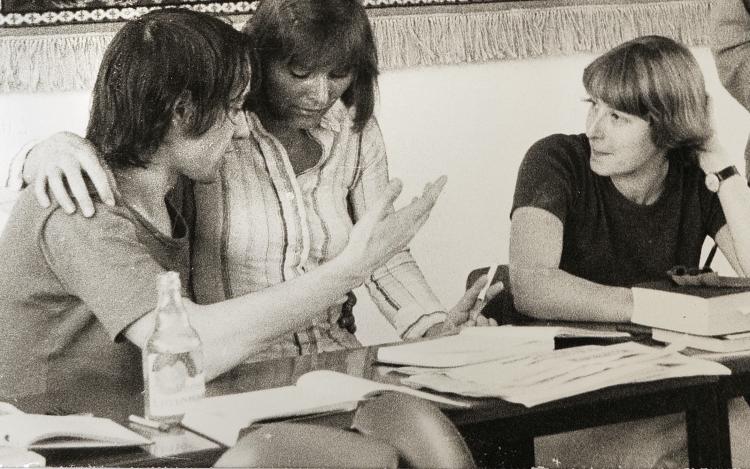
Traveling helped. Taking part in excavations in Spain satisfied her longing for a time. After the Iranian revolution in 1979, she went to Tehran as a journalist. And after a year and a half, she had to face the fact that she "could not live here as a single woman”. Her marriage to an Iranian man was also short-lived. What remained was the name Bouresh – and a daughter. It was probably when Maja was born in 1984 that Bettina finally began to put down roots.

The town of Ostróda was founded in the 14th century as a settlement near a Teutonic Order castle. In 2020, almost 33,000 people lived here.
The picture shows a postcard with a city view of Ostróda /Osterode before 1945.

Until then Bettina had only known fragments, but now the whole tragedy came to light. When the Red Army conquered Allenstein, her grandparents had stayed behind and starved to death. Of their eight children, one son was missing, three sons died as children in World War I, one daughter was deported in the spring of 1945 and died on the way to
Siberia covers an area of 12.8 million square kilometers between the Urals, the Pacific Ocean, the North Polar Sea, China and Mongolia.The Russian conquest of Siberia began in 1581/82. At the time of the Enlightenment mainly a source of raw materials and space for trade with Asia, Siberia gained importance from the 19th century as a place for penal colonies and exiles. With the development of the Trans-Siberian Railway and steam navigation at the end of the 19th century, industrialization and thus new settlers came to Siberia. Further industrialization under Stalin was implemented primarily with the labor of Gulag prisoners and prisoners of war.
The map shows North Asia, centrally located Siberia. CIA World Factbook, edited by Veliath (2006) and Ulamm (2008). CC0 1.0.
The conversations with Poles and Germans who had stayed behind were somehow comforting, similar stories of being uprooted and having to start a new life. Trips to the countryside were a joy – even for the child. On one tour, they ended up in Sztynort, at Lehndorff Palace.


The two friends wrote a letter to the mayor of the municipality of
Węgorzewo is a city in northeastern Poland in Warmińsko-Mazurskie Voivodeship. It is inhabit by about 11,000 people and is located not far from the border of Poland with Russia.


The village of Sztynort is located in the north of the Masurian Lake District on the Jez Peninsula between Jezioro Mamry, Jezioro Dargin and Jezioro Dobskie. Until 1928 the village was called Groß Steinort, then Steinort.
Over time, however, the momentum dried up. During one of her last visits to Masuria with her mother, in 2004, it looked as if the castle was irretrievably lost. But efforts continued and, in 2009, the German-Polish Foundation for the Preservation of Culture and Monuments, together with its Polish sister foundation, TIGA Yacht-Gesellschaft, was able to buy the castle for the symbolic sum of 1 złoty. In the same year, the Lehndorff-Gesellschaft Steinort e.V. was founded in Berlin as a successor to the Förderkreis.

Already, there is life around the palace in the summer, Bettina Bouresh is in the middle of it again. A cultural festival, summer university, guided tours, small exhibitions, and a volunteer program that bring locals and tourists together.
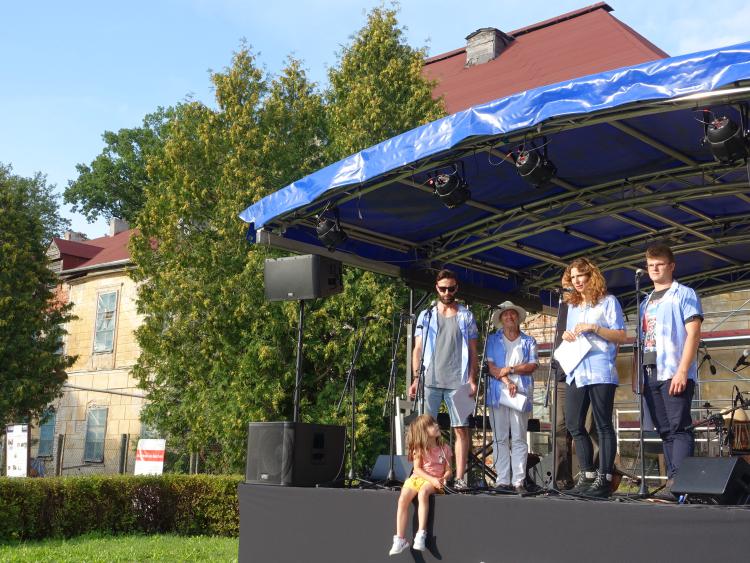
First thing in the morning she jumps into Mauersee, the lake. Water, space, silence – nowhere in the world is more beautiful.




